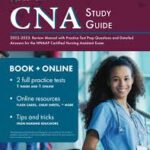The Anxiety Toolkit: Proven Strategies for a Calmer, Happier You
The Anxiety Toolkit: Proven Strategies for a Calmer, Happier You
Table of Contents
- Introduction: Understanding Anxiety
- Chapter 1: Identifying Your Triggers
- Chapter 2: Mindfulness and Meditation for Anxiety Relief
- Chapter 3: Cognitive Behavioral Therapy (CBT) Techniques
- Chapter 4: Managing Panic Attacks
- Chapter 5: Lifestyle Changes for Long-term Anxiety Management
- Chapter 6: Building Resilience
- Chapter 7: Self-Care Practices for Emotional Well-being
- Chapter 8: Healthy Boundaries and Social Connections
- Chapter 9: The Role of Nutrition and Exercise in Anxiety Management
- Chapter 10: Tools for Daily Anxiety Relief
- Chapter 11: Seeking Professional Help
- Conclusion: Your Journey to a Calmer, Happier You
- Resources and Further Reading
Introduction: Understanding Anxiety
Anxiety is something we all experience in our lives. It’s a natural response to stress or perceived threats, and in moderate amounts, it can actually help keep us alert and focused. However, when anxiety becomes overwhelming, frequent, or debilitating, it can disrupt our daily lives, relationships, and overall well-being.
This book is designed to serve as your personal toolkit, filled with practical, proven strategies to help you manage anxiety effectively. Whether you experience occasional bouts of anxiety or live with an anxiety disorder, the tools in this book will guide you toward calmness, resilience, and a happier state of mind.
Chapter 1: Identifying Your Triggers
One of the first steps in managing anxiety is to understand the situations, thoughts, or events that trigger it. Triggers can vary from person to person but commonly include stress at work, interpersonal conflicts, health issues, or financial difficulties.
Common Anxiety Triggers:
- Work-Related Stress: Deadlines, performance reviews, or job insecurity.
- Personal Relationships: Miscommunication, conflict, or loss of a loved one.
- Health Concerns: Chronic illnesses or fear of becoming ill.
- Major Life Changes: Moving, starting a new job, or becoming a parent.
Strategy 1: Keeping an Anxiety Journal
Anxiety journaling is an effective way to track your thoughts and identify patterns. Write down moments when you feel anxious and what you were doing or thinking before the feeling arose. Over time, you’ll begin to see connections between specific events and your anxiety levels.
Strategy 2: Mind Mapping Your Triggers
Create a visual map of your life, marking areas like “work,” “family,” and “health.” From each area, draw lines to specific worries. This exercise helps you organize your concerns, making them easier to address.
Chapter 2: Mindfulness and Meditation for Anxiety Relief
Mindfulness and meditation are widely recognized as powerful tools for reducing anxiety. They train your mind to focus on the present moment and reduce the tendency to ruminate on past or future concerns.
What is Mindfulness?
Mindfulness is the practice of being fully present and engaged with whatever you’re doing, without being distracted by thoughts, judgments, or worries. It allows you to observe your thoughts and feelings without getting caught up in them.
Strategy 3: The Body Scan Meditation
The body scan meditation involves mentally “scanning” your body from head to toe, noticing any sensations of tension or discomfort. It helps bring awareness to physical signs of anxiety and promotes relaxation.
Strategy 4: Breathing Techniques
Deep, diaphragmatic breathing can calm your nervous system and reduce the intensity of anxious feelings. Practice inhaling for a count of four, holding for four, and exhaling for four.
Strategy 5: The 5-4-3-2-1 Grounding Technique
This method helps to anchor you in the present moment when anxiety threatens to take over. Identify five things you can see, four things you can touch, three things you can hear, two things you can smell, and one thing you can taste. This simple exercise can reduce anxiety quickly by engaging your senses.
Chapter 3: Cognitive Behavioral Therapy (CBT) Techniques
Cognitive Behavioral Therapy (CBT) is one of the most effective treatments for anxiety. It focuses on identifying and changing negative thought patterns that contribute to anxiety.
Strategy 6: Identifying Cognitive Distortions
Cognitive distortions are irrational thought patterns that fuel anxiety. Common examples include:
- Catastrophizing: Expecting the worst-case scenario.
- Black-and-White Thinking: Viewing situations as entirely good or bad with no middle ground.
- Overgeneralization: Assuming that if something bad happens once, it will happen repeatedly.
By recognizing these distortions, you can begin to challenge and replace them with more balanced thoughts.
Strategy 7: The ABC Model (Antecedent, Belief, Consequence)
This model helps you break down an anxious thought into its components:
- Antecedent (A): The situation that triggered your anxiety.
- Belief (B): The thought or belief you had in response.
- Consequence (C): The emotional and behavioral result of that belief.
By focusing on your belief, you can change the emotional outcome.
Chapter 4: Managing Panic Attacks
Panic attacks are sudden and intense surges of anxiety that can feel overwhelming. Learning how to manage them can significantly improve your quality of life.
Strategy 8: The Panic Attack Action Plan
Create a personalized plan for handling panic attacks, including:
- Breathing exercises to calm your body.
- A safe space to retreat to if needed.
- A comforting mantra to remind yourself that the attack will pass.
Strategy 9: Gradual Exposure to Anxiety Triggers
For some people, facing their fears in a controlled, gradual way can help desensitize them to the triggers. This technique is especially helpful for social anxiety or phobias.
Chapter 5: Lifestyle Changes for Long-term Anxiety Management
A healthy lifestyle plays a crucial role in managing anxiety. Small, consistent changes to your routine can reduce overall anxiety levels.
Strategy 10: Regular Physical Activity
Exercise releases endorphins, the body’s natural mood boosters. Aim for 30 minutes of moderate exercise most days of the week.
Strategy 11: Healthy Sleep Habits
Poor sleep can exacerbate anxiety. Develop a sleep routine that promotes restfulness by limiting screen time before bed, avoiding caffeine late in the day, and creating a relaxing bedtime ritual.
Strategy 12: Limiting Caffeine and Alcohol
Both caffeine and alcohol can heighten anxiety. Gradually reduce your intake to see if it impacts your anxiety levels.
Chapter 6: Building Resilience
Resilience is the ability to bounce back from adversity. Cultivating resilience helps you manage anxiety by increasing your ability to cope with life’s challenges.
Strategy 13: Embracing Change
Change is inevitable, and accepting this can make anxiety less overwhelming. Work on building flexibility in your mindset to adapt to new situations.
Strategy 14: Strengthening Problem-Solving Skills
When faced with anxiety-inducing problems, break them down into manageable steps. Tackling small pieces can make large problems seem less daunting.
Chapter 7: Self-Care Practices for Emotional Well-being
Self-care isn’t just about pampering yourself; it’s about taking actions that improve your mental health and emotional resilience.
Strategy 15: The Power of “Me Time”
Schedule regular periods of time where you focus on your well-being, whether through a relaxing bath, reading a book, or engaging in a hobby that brings you joy.
Strategy 16: Journaling for Emotional Clarity
Writing about your feelings can help process emotions and reduce anxiety. You might find it helpful to do this daily, even if only for a few minutes.
Chapter 8: Healthy Boundaries and Social Connections
Our relationships can either support or exacerbate our anxiety, depending on how we manage them. Learning to set healthy boundaries is essential.
Strategy 17: Assertive Communication
Anxiety often stems from feeling misunderstood or unappreciated. Practicing assertiveness allows you to express your needs clearly without becoming aggressive or passive.
Strategy 18: Leaning on Social Support
Humans are social creatures, and having a strong support network can ease anxiety. Don’t hesitate to reach out to friends or family members when you need help.
Chapter 9: The Role of Nutrition and Exercise in Anxiety Management
Nutrition and exercise are critical to maintaining a calm mind. What you eat and how you move can significantly impact your mental state.
Strategy 19: Foods That Help Calm Anxiety
Incorporate more whole grains, leafy greens, fatty fish, and foods high in magnesium and omega-3s, as these have been linked to improved mood and reduced anxiety.
Strategy 20: Yoga and Stretching
Yoga, in particular, is a powerful form of exercise for reducing anxiety. It combines physical movement with mindfulness and deep breathing, creating a well-rounded approach to calming both mind and body.
Chapter 10: Tools for Daily Anxiety Relief
Even with long-term strategies in place, anxiety can still creep up in our day-to-day lives. Having quick and easy tools at your disposal can make all the difference.
Strategy 21: Carry a Comfort Object
Having a small object, like a stress ball or a favorite piece of jewelry, can provide comfort in anxious moments. Use it as a grounding tool.
Strategy 22: Positive Affirmations
Create a list of positive affirmations that help combat negative thoughts. Repeating these to yourself when anxiety arises can help shift your mindset.
Chapter 11: Seeking Professional Help
For some, anxiety can be managed with self-care strategies, but for others, professional help may be necessary. If your anxiety is significantly affecting your day-to-day life, relationships, or ability to function, it’s important to seek assistance from a mental health professional.
Strategy 23: Understanding When to Seek Help
Anxiety disorders are treatable, and there’s no shame in reaching out for help. Signs that you might benefit from professional support include:
- Persistent feelings of dread or fear.
- Inability to concentrate or complete tasks due to anxiety.
- Frequent panic attacks or physical symptoms like chest pain or shortness of breath.
- Avoiding situations or places out of fear.
Types of Professional Help:
- Therapists and Counselors: Trained professionals who can guide you through talk therapies like Cognitive Behavioral Therapy (CBT) or other therapeutic methods.
- Psychiatrists: Medical doctors who specialize in mental health and can prescribe medication if necessary.
- Support Groups: Many people find comfort in talking with others who are facing similar struggles. Peer support groups, either in person or online, provide a space to share experiences and coping strategies.
Strategy 24: Medication for Anxiety
In some cases, medication may be recommended to help manage anxiety, particularly if it is severe or not improving with other strategies. Medications like selective serotonin reuptake inhibitors (SSRIs), benzodiazepines, or beta-blockers can be prescribed under the guidance of a healthcare provider.
Medication isn’t a one-size-fits-all solution, and it’s often used in combination with other treatments like therapy. Always consult a doctor before starting or stopping any medication.
Chapter 12: Conclusion – Your Journey to a Calmer, Happier You
Anxiety is a complex emotion, but it doesn’t have to control your life. The tools in this book are designed to empower you to manage anxiety more effectively, build resilience, and find calm in the chaos of life.
Remember, progress may not always be linear. You may experience setbacks or moments when anxiety feels overwhelming, and that’s okay. The important thing is that you are actively working to take control of your mental health. By consistently applying the strategies in this book, you will build stronger coping mechanisms, become more attuned to your body and mind, and ultimately lead a calmer, happier life.
Your journey toward peace and happiness is personal, but you don’t have to walk it alone. Reach out to your support system when needed, seek professional help if required, and always give yourself grace as you move forward.
Resources and Further Reading
If you’re interested in learning more about anxiety management and mental health, the following resources can provide additional information and support:
- Books:
- The Anxiety and Phobia Workbook by Edmund Bourne
- The Mindful Way Through Anxiety by Susan M. Orsillo and Lizabeth Roemer
- Dare: The New Way to End Anxiety and Stop Panic Attacks by Barry McDonagh
- Online Resources:
- Anxiety and Depression Association of America (ADAA) – A comprehensive resource for anxiety disorders, including articles, webinars, and a therapist directory.
- Mind.org – A mental health charity offering information and advice on anxiety and other mental health conditions.
- Therapy and Counseling:
- Websites like BetterHelp and Talkspace offer access to licensed therapists through online counseling services, making therapy more accessible.
- Apps for Anxiety Relief:
- Calm – A mindfulness app offering guided meditations, breathing exercises, and relaxation techniques.
- Headspace – Another popular mindfulness app with tools for meditation, sleep, and stress relief.
- Moodpath – An app that helps track your emotional state and provides insights into your mental health.
By applying these strategies, you are taking a powerful step toward managing anxiety and enhancing your overall well-being. Your path to calm and happiness is achievable, one small step at a time.
:
.



